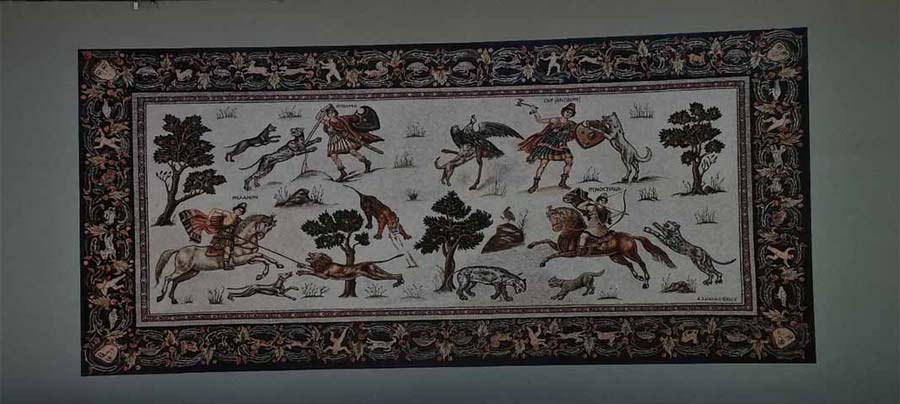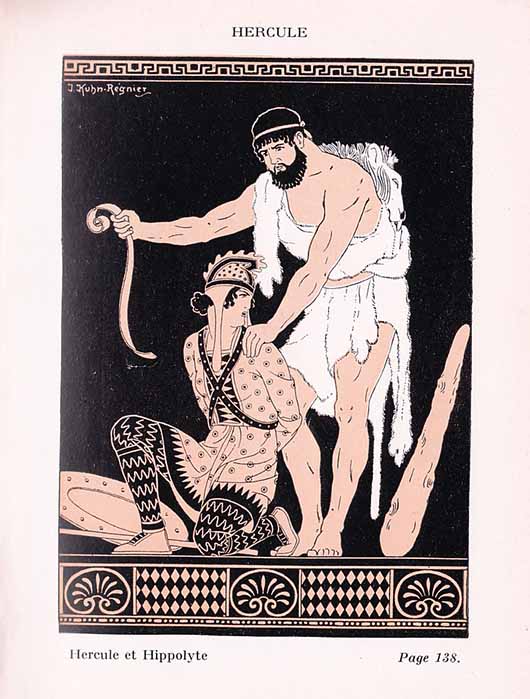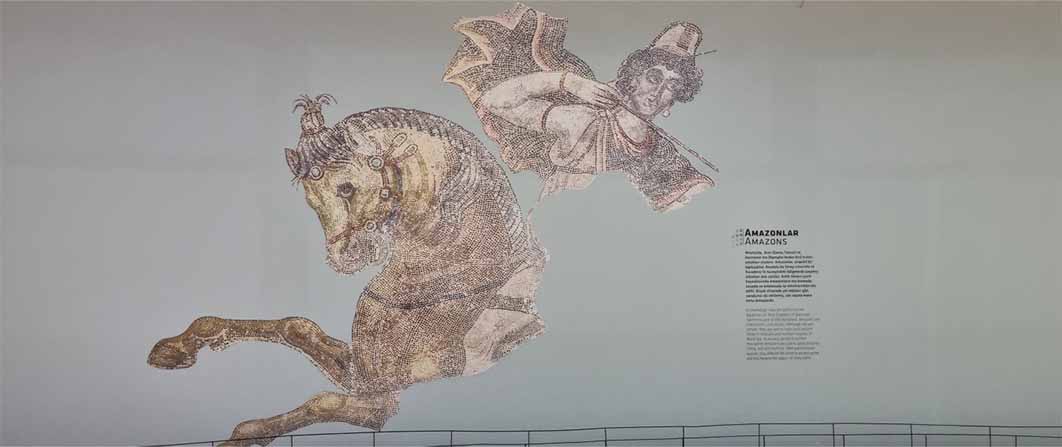
Gender Interpretation Of Achilles And Amazon Penthesilea’s Fatal Love In Greek Art
Amazon queen Penthesilea was breathtakingly beautiful. “Aphrodite, the noble bride of the potent War-god, made her beautiful indeed in death, so that the son of Peleus (Achilles), could be pierced by the arrow of chastising love," writes the fourth-century AD Greek poet Quintus Smyrnaeus in his poem Posthomerica (Things After Homer). In addition to her beauty, Penthesilea was also born into a family of queens. She was the daughter of Ares, the god of war, and Otrera, Queen of the legendary Amazons. Apart from Penthesilea, Ares and Otrera had three other daughters: Hippolyta, Antiope, and Melanippe. Hippolyta went on to become one of the most famous of the Amazon queens, while her other sisters Antiope and Melanippe ruled alongside her over their country's three major cities.

Reconstruction of the mosaic of the Amazon hunt with Melanippe, Hippolyta, Antiope and Penthesilea. Sanliurfa Haleplibache Mosaic Museum (Image: Courtesy Micki Pistorius)
Hippolyta’s Girdle
Hippolyta owned a golden, jewel-encrusted belt, a gift from Ares himself, as a symbol of her authority. One day, Princess Admete, daughter of King Eurystheus, decided that she wanted to have that divine belt for herself. Her father then ordered the semi-divine hero Heracles, who happened to be at his service at the time, as a part of his 12 labours, to obtain this precious belt. Heracles led a band of warriors into Amazonian territory to either persuade or force Hippolyta to hand over her treasure.

Hercules and Hippolyta by Joseph Kuhn-Regnier (Public Domain)
Heracles and his men arrived in the land of the Amazons after a long journey and docked at the harbor. The queen, Hippolyta herself, came down to see these strange men when they disembarked from their ship. When Hercules told her why he had come, Hippolyta promised to give him the belt. Unfortunately, the goddess Hera was set to sabotage Heracles’ 12 labors. Therefore, disguised as an Amazon warrior, Hera rallied the Amazon army telling each woman that the strangers who had arrived intended to abduct their queen. Thus, the Amazons donned their armour and rode down to the harbor on horseback. When Heracles noticed the approaching Amazons in armour and carrying weapons, he knew he was under attack. Thinking quickly, he drew his sword and slayed their queen, Hippolyta.
Another version of this story claims that Theseus of Athens was among Heracles' warriors. Theseus declared his love for Hippolyta and took her to Athens with him. They had a son named Hippolytus. When Theseus decided to marry Ariadne's sister Phaedra – a princess daughter from King Minos -instead of Hippolyta, the enraged Amazons descended on the wedding party and during the confusion, Penthesilea unintentionally killed her sister Hippolyta. However, there is another story in which neither Heracles nor Theseus play any role. In this version, Hippolyta was hunting deer with Penthesilea when the gods sent a rogue wind, and Penthesilea's spear instead struck her sister. Hippolyta died, and the bereaved Penthesilea took her place as queen of the Amazons.
Enlarged version of the mosaic depiction of Penthesilea at the Sanliurfa Amazons Mosaic Museum (Image: Courtesy Micki Pistorius)
Penthesilea Enters the Trojan War
Penthesilea fell into a deep depression after her sister's tragic death. She may have inherited the throne, but she saw herself as unworthy of the position because she believed that she had murdered her own sister. While other women in Greek mythology may have committed suicide because of their grief and sense of guilt, Penthesilea was a warrior and would not have had that “luxury”. Being a warrior, Penthesilea would have had to die an honourable death in battle to maintain respect. Understanding this, the grieving new queen sought a way to die in battle. Fortunately, she was presented with an opportunity to secure an honorable, glorious death soon after becoming the Amazon queen—the Trojan War. Despite her initial wish remain neutral in the war, Penthesilea eventually led a massive army of Amazon foot soldiers, archers, and cavalrywomen to Troy.





